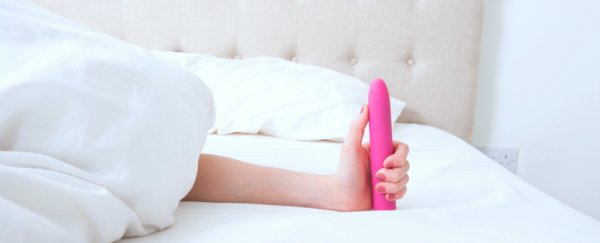Sexual pleasure was once thought to be a cure for female hysteria - a totally fabricated disease meant to explain fainting, anxiety, sleeplessness and, of course, a woman's "tendency to cause trouble".
As little as 100 years ago, it was routine practice for doctors in the Victorian era to bring their female patients to orgasm to treat this now defunct disease.
At first the physicians used their hands, but faced with a growing epidemic, a faster and more efficient alternative was needed, and so the female vibrator was conceived.
At least, that's the origin story most of us have been told, repeated so often in popular culture and scholarly works that it has now become an established historical fact.
The only problem? There's absolutely no evidence for it, according to a new study. Or, in fact, that female orgasms were used to treat hysteria at all.
The idea was first put forward by historian Rachel Maines in her 1999 book, The Technology of Orgasm.
The book had two main arguments: firstly, that 'massage to orgasm' was a staple of medical practice among Western physicians for thousands of years; and secondly, that vibrators increased the number of patients that Victorian doctors could treat for hysteria.
It went on to win awards in both science and history categories.
In the book, Maines contended that Victorian physicians did not regard the routine use of vibrators as sexual because there was "no penetration", with the doctors referring to the ensuing orgasms as 'paroxysms' instead.
Protected by euphemisms, the handy tool soon found its way onto the market and into the bedside drawers of women everywhere.
It's a juicy story, but according to the new research, that's about it.
After examining every single source used by Maines, the authors of the new paper - two historians from Georgia tech - found no evidence to substantiate her claims, and showed that many of her sources do not support her points.
Their research shows that while there is some circumstantial evidence that genital massage was practiced before the 20th century, they could find no proof at all that this was ever a "staple of medical practice".
Maines' second argument is equally disputable.
The new paper concludes:
"Maines fails to cite a single source that openly describes use of the vibrator to massage the clitoral area. None of her English-language sources even mentions production of 'paroxysms' by massage or anything else that could remotely suggest an orgasm".
In fact, most of the hysteria sources that Maines cites fail to even mention vibrators.
What's more, one of the few sources that does apply to vibrators does not refer to the tools as a treatment for hysteria. Instead, the Victorian physician quoted advocates for vibrator use on "the intestines, kidneys, lungs, and skin". There is no mention of its use on genitals.
Perhaps most surprising is the fact the arguments in Maines' book have stood for 19 years with no major rebuttal from a scholarly publication until now.
While there have been some critiques of the book since its publication, this is the first paper debunking Maines' core arguments to be published in a peer-reviewed journal.
Interestingly, Maines herself contends that her book was just a theory, and she says she is surprised it took twenty years for someone to poke holes in it.
"I never claimed to have evidence that this was really the case," she told The Atlantic.
"What I said was that this was an interesting hypothesis, and as [Lieberman] points out — correctly, I think — people fell all over it. It was ripe to be turned into mythology somehow. I didn't intend it that way, but boy, people sure took it, ran with it".
But as one of the authors of the new study, Eric Schatzberg, points out, the definitive language in Maines' book hardly implies her argument is theoretical.
Within the first few pages, she makes an absolute claim that genital massage to orgasm was a "standard treatment for hysteria", leaving little room for contention and no suggestion that this is just her personal theory.
The authors say that their paper just goes to show the obvious failure in academic quality control, where books are not fact-checked by publishers (or even, apparently, the American Historical Association, which awarded Maines the Herbert Feis award for "distinguished contributions to public history").
"The success of her book suggests that academics rarely check each others' facts carefully, especially when repeating stories that they want to be true," the authors write.
And that isn't just a retroactive warning for publishers in the 1990s. This sort of thing is still happening today.
When Schatzberg and his co-author Hallie Lieberman finally finished their journal article, rebutting Maines' claims, they struggled to find someone to publish it.
"You are letting 'facts' slide over into what might fairly be called interpretation," one reviewer wrote, according to The Atlantic.
Perhaps the resistance from publishers came from the strong wording used in the conclusion of the article.
Liberman and Schatzberg hold nothing back, calling out the humanities and social sciences for their "narrow, banal, and irrelevant research, often disguised by horrid prose and vapid theorising".
"Unless a spirit of fact checking and fearless critique is built into the culture of scholarly publishing," the authors write, "false historical narratives like Maines' will continue to be published and even praised".
The study has been published in the Journal of Positive Sexuality.
